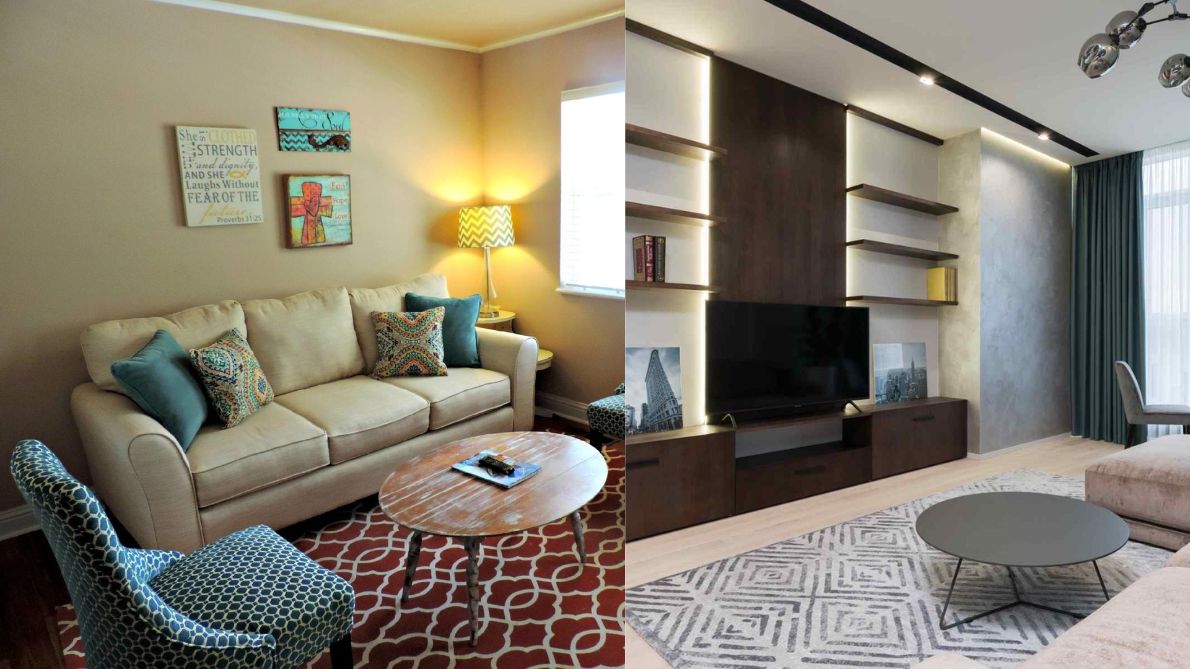Basement Remodel on a Budget: How to Plan Costs Without Compromising Style
Remodeling your basement is one of the smartest ways to add value, style, and functionality to your home. Whether you’re dreaming of a cozy family lounge, a private guest suite, a personal gym, or a stylish home office, the basement offers unlimited potential. But before the first hammer swings or walls come down, it’s crucial to start with a smart, strategic budget. Without a detailed financial plan, your basement remodel can easily go off track, leading to overspending, delays, and unnecessary stress.
In this comprehensive guide, we’ll walk you through everything you need to know about budgeting for a basement remodel. From cost breakdowns and smart savings to planning for the unexpected, this article will help you create a realistic plan that delivers both beauty and value—without breaking the bank.

Why a Remodeling Budget is the Foundation of Success
Every successful basement remodel begins with a clear and well-defined budget. It’s easy to get excited about paint swatches and tile options, but without understanding what you can comfortably afford, things can quickly spiral out of control. A budget doesn’t limit your creativity—it empowers it. It allows you to make informed decisions, prioritize features that matter most, and maintain full control of the process from start to finish.
By building your remodel around a firm budget, you’re more likely to avoid surprises, protect your financial well-being, and achieve the results you envisioned. It’s not just about how much you spend; it’s about spending wisely and with intention.
Define Your Goals and Vision for the Space
Before diving into costs and estimates, take a moment to think about your ideal basement. What’s the purpose of this space? Are you looking to create a quiet home office, a fun game room for the kids, a luxurious guest suite, or perhaps an income-generating rental unit?
Each purpose comes with its own design, structural, and utility needs. A playroom might be simple and cost-effective, while a legal rental suite with a bathroom and kitchen can significantly increase your budget due to plumbing, insulation, soundproofing, and code compliance. Start by writing down what you want from your new space. This clarity will help guide every financial and design decision going forward.
Assess the Current Condition of Your Basement
To build a realistic budget, you’ll need to assess the current state of your basement. Is it already partially finished? Are there signs of moisture or mold? Does the electrical system need to be upgraded? Will the HVAC need to be extended?
Older basements often hide issues that must be addressed before the aesthetic upgrades can begin. Moisture control, insulation, ventilation, and structural repairs aren’t glamorous, but they’re essential for creating a safe, dry, and livable environment. These foundational upgrades can consume a large portion of your budget, so it’s important to factor them in early. Skipping this step or underestimating repair costs is one of the most common mistakes homeowners make.
Understand the Major Cost Categories

Budgeting isn’t just about coming up with one big number—it’s about breaking your project down into manageable and predictable pieces. While exact costs vary by region and project scope, basement remodels typically involve the following categories:
Design and Planning – Whether you work with an architect or interior designer, early design services will ensure your space is functional and beautiful. Some contractors also offer design consultation as part of their package.
Framing and Drywall – These are the bones of your remodel and usually represent a significant percentage of the cost, especially if you’re changing layouts or building separate rooms.
Electrical and Lighting – Rewiring, adding outlets, and upgrading fixtures for proper lighting can add up. It’s also important to consider low-voltage wiring for home theaters or smart systems.
Plumbing – If your design includes a bathroom, bar, or laundry, plumbing is a big-ticket item. Depending on the distance to main lines and local code, costs can vary widely.
HVAC and Ventilation – Extending heating and cooling into the basement, adding ductwork, or installing dehumidifiers and exhaust fans will ensure year-round comfort.
Insulation and Waterproofing – Keeping the space warm and dry is essential. Budget for moisture barriers, spray foam insulation, or sump pump systems as needed.
Flooring and Ceiling – Whether you prefer laminate, carpet, or luxury vinyl, flooring makes a big difference in your overall aesthetic and comfort. Drop ceilings or drywall ceilings also carry cost implications.
Finishes and Fixtures – Paint, doors, trim, cabinetry, countertops, and decorative features can dramatically change the look and feel of the space—and your total cost.
Permits and Inspections – Depending on your location and project scope, building permits and professional inspections may be required.
Set Your Priorities Wisely
Once you’ve identified your must-haves and nice-to-haves, you can prioritize accordingly. Perhaps you’re willing to spend more on a high-end entertainment system but prefer cost-effective flooring. Or maybe you’re okay with basic cabinetry now and plan to upgrade later. By ranking your priorities, you can allocate your budget effectively without compromising on the features that matter most.
This also helps during unexpected discoveries—like hidden water damage or outdated wiring—because you’ll already know which areas you can cut back on without sacrificing your vision.
Add a Contingency Cushion
Even the best-planned remodels face unexpected surprises. That’s why seasoned contractors recommend adding a 10–20% contingency to your total budget. This “just-in-case” fund will help you handle unforeseen expenses without stress, delays, or budget blowouts.
This cushion also gives you flexibility. Maybe you find a tile that’s a bit more expensive but perfect for your design. Or you decide mid-project to add a fireplace or wet bar. With a built-in contingency, you can make those exciting changes without worry.
Consider Long-Term Value and Return on Investment
Basement remodels often deliver a high return on investment (ROI). According to national data, finishing a basement can recoup between 70% to 75% of its cost in added home value. Features like bathrooms, separate entrances, or rental potential can increase this return.
But ROI isn’t just about resale—it’s also about daily use and enjoyment. A space that meets your family’s needs, improves your lifestyle, and makes your home more livable brings value far beyond numbers. Investing in energy-efficient lighting, durable materials, or smart home technology may cost more upfront but pay off in the long run.
Explore Financing Options If Needed
If your dream basement exceeds your cash on hand, there are several ways to finance the project. Home equity loans or lines of credit (HELOCs) are popular choices for remodeling projects because they typically offer lower interest rates. Personal loans, renovation loans, or contractor-provided financing may also be available, depending on your credit and financial situation.
Before choosing a financing option, consult with your bank or lender to understand terms, interest rates, and payment structures. The right plan can make your basement remodel more accessible while preserving your financial health.
Choose the Right Contractor to Stay on Budget

Partnering with an experienced and trustworthy contractor is one of the best ways to stay on budget and ensure a smooth remodeling experience. At A1 Basement Finishing, we guide you through every step—from planning and budgeting to permits and construction—with complete transparency. Our team provides detailed, itemized estimates so you understand exactly where your money is going.
A good contractor will also help you find cost-effective alternatives, anticipate potential issues, and stick to timelines and budgets. Don’t just go with the lowest bid—look for value, reputation, and proven results.
Track Your Budget Throughout the Project
Once your remodel is underway, it’s vital to monitor your budget. Use spreadsheets, apps, or project management tools to track spending in real-time. Compare actual costs with your planned budget weekly and flag any areas where you’re overspending or under budget.
Clear communication with your contractor is also key. Regular updates and site visits can help ensure your remodel stays aligned with both your budget and vision. If something changes or costs shift, having a flexible yet structured plan makes decision-making easier.
Final Thoughts: Turning Planning into a Dream Space
Budgeting for your basement remodel isn’t about limiting your options—it’s about making informed, confident choices that bring your vision to life. When done right, your basement can become a space that enhances your lifestyle, adds value to your home, and brings your family together.
By setting clear goals, assessing your space, allocating funds wisely, and working with trusted professionals, you can enjoy the remodeling journey with clarity and peace of mind.
“A dream basement begins not with a blueprint, but with a budget.”
— A1 Basement Finishing
Let’s Start Building Your Ideal Basement
At A1 Basement Finishing, we specialize in creating stunning, functional basement spaces tailored to your style, needs, and budget. Serving homeowners across Ankeny, Des Moines, West Des Moines, and surrounding areas, we bring unmatched craftsmanship, transparency, and care to every project.
Want to know what your dream basement might cost? We’re here to provide a free, no-obligation estimate that’s honest and customized to your space.



Add a Comment